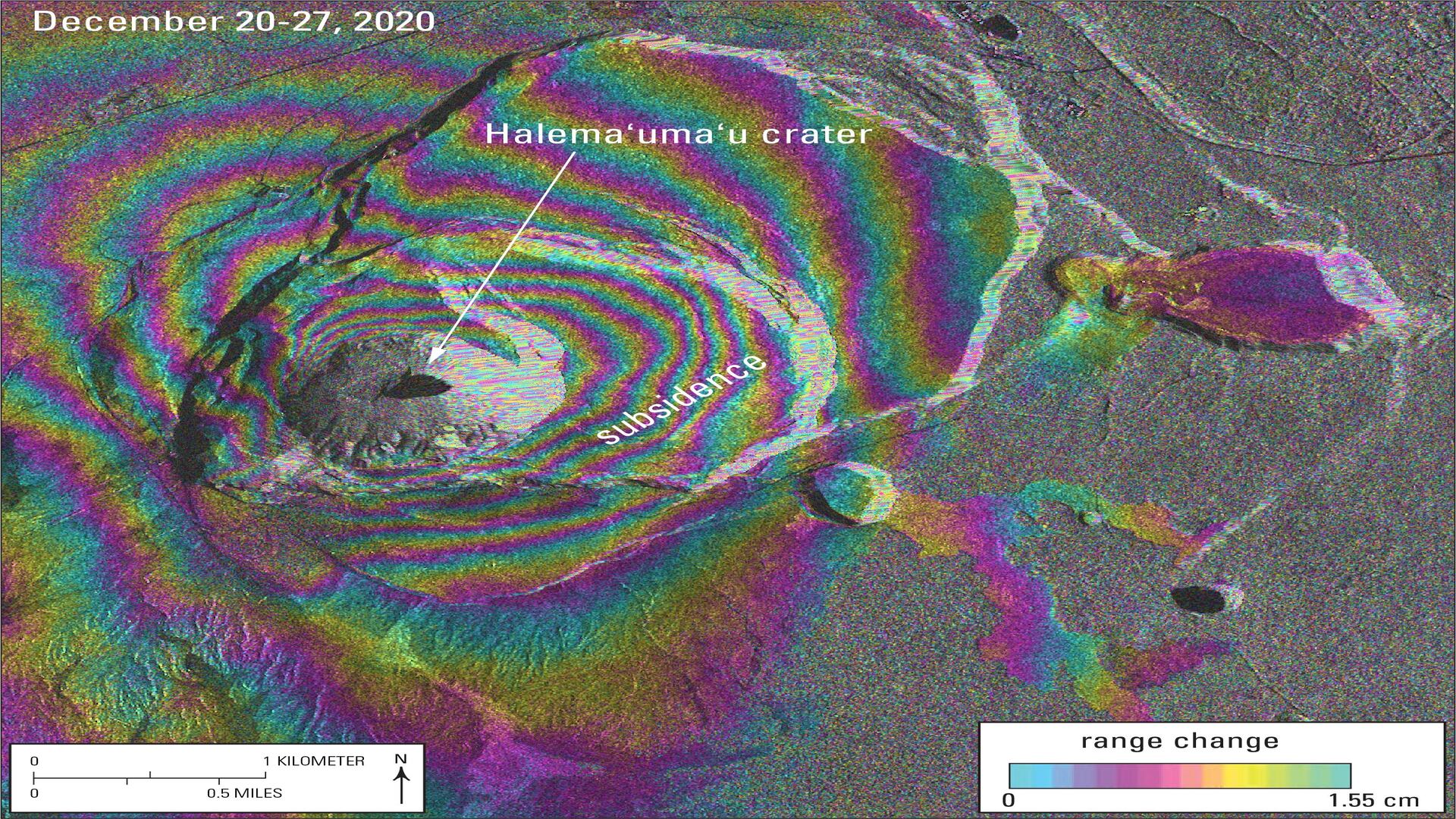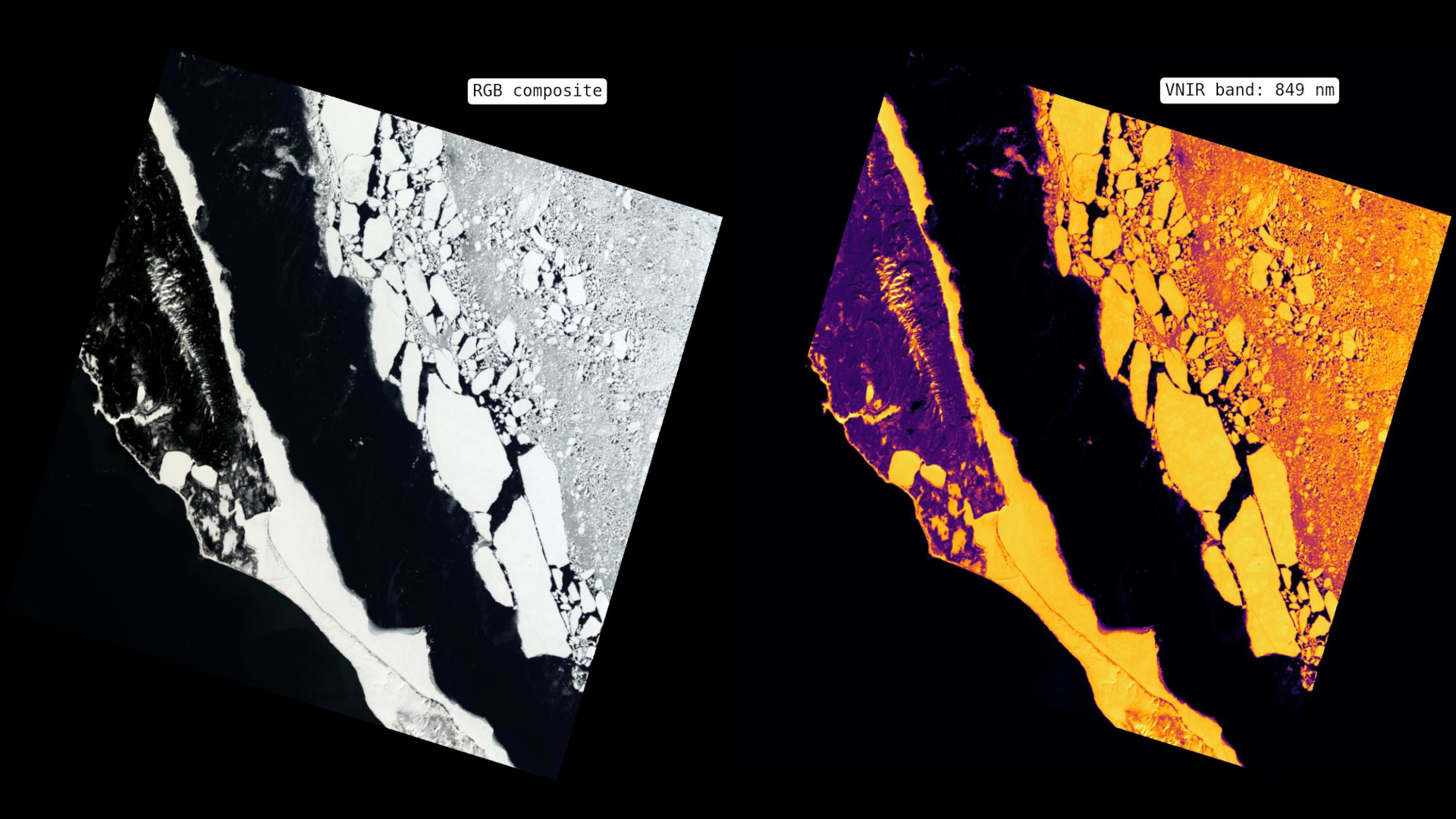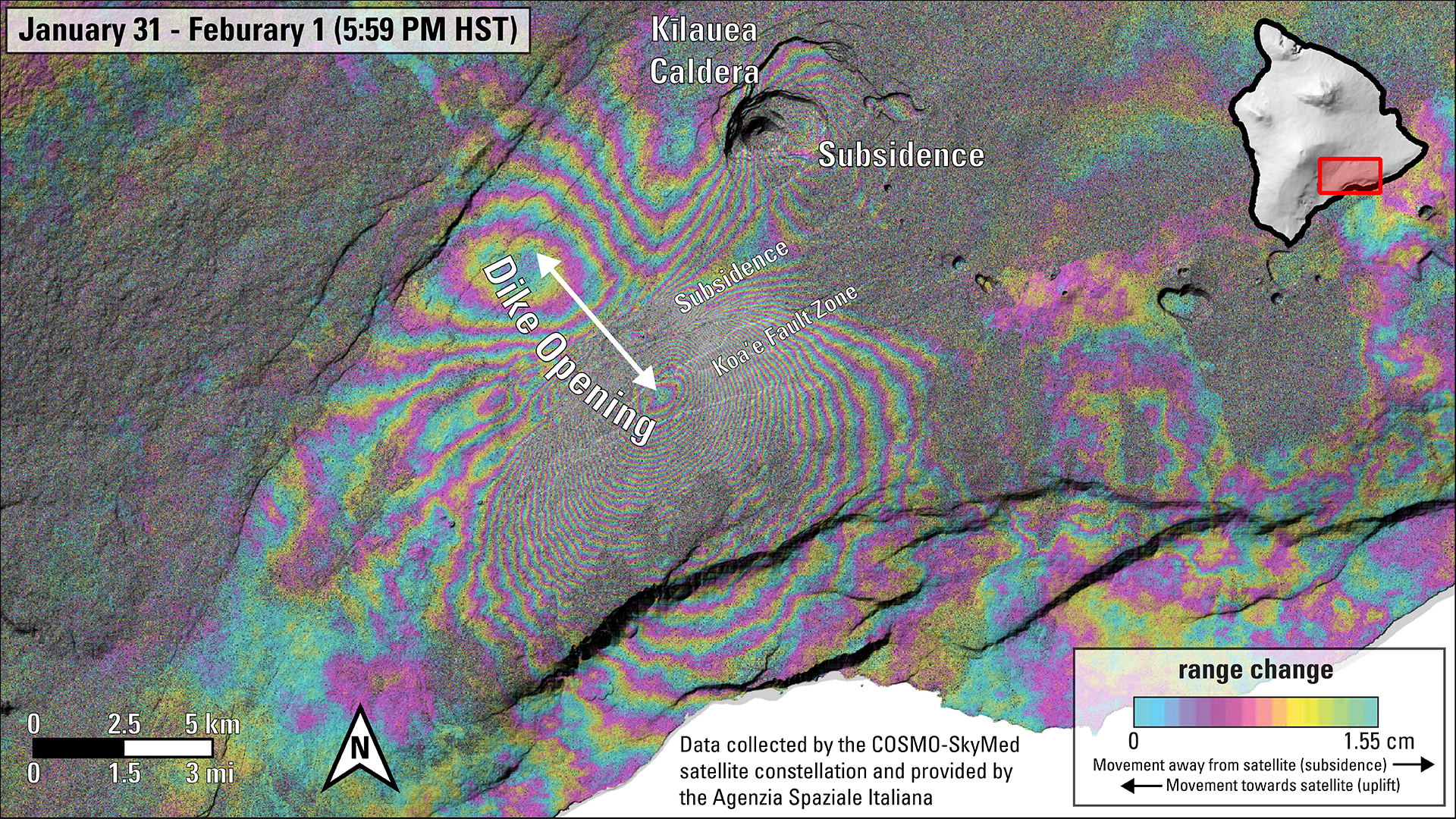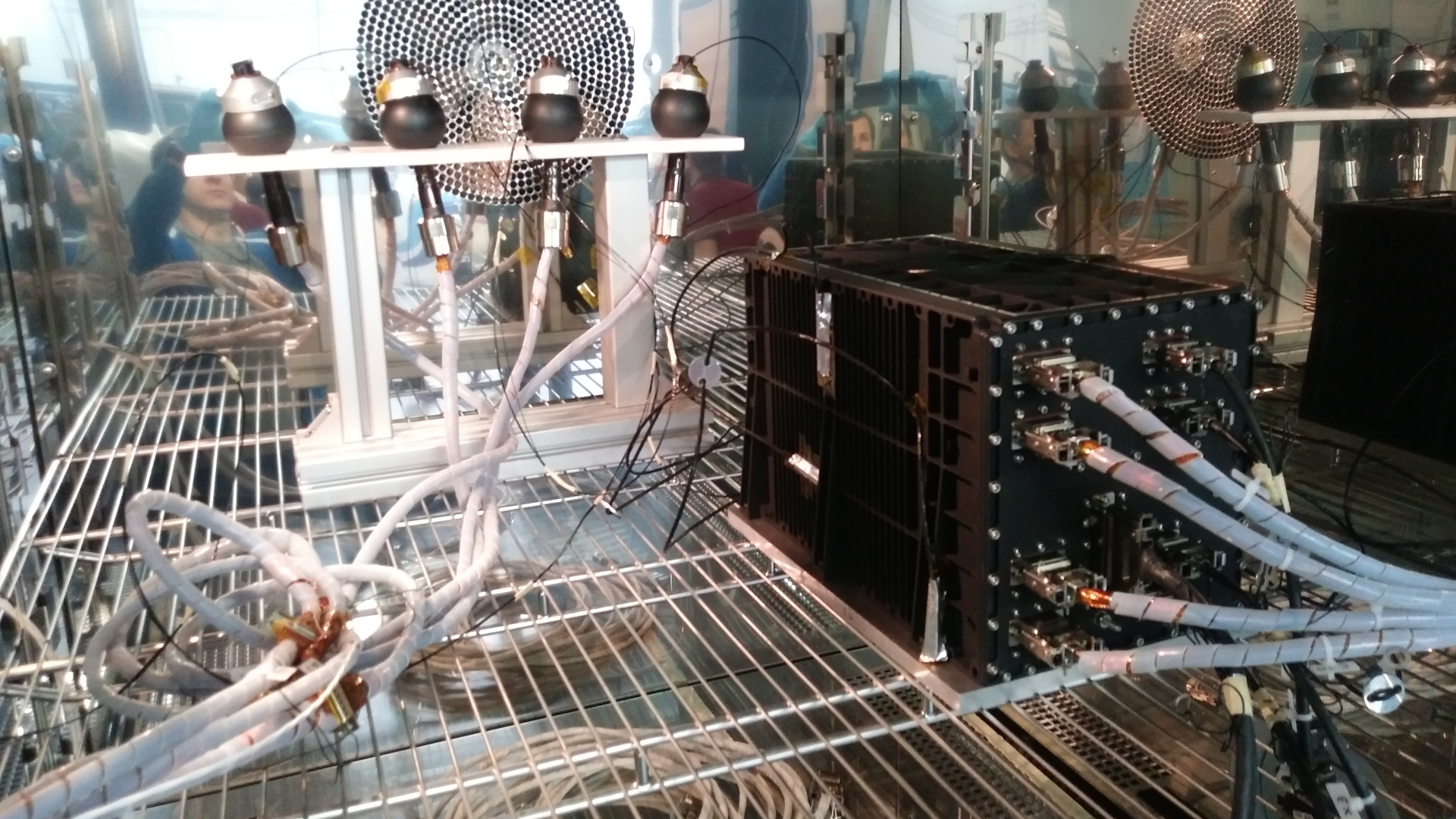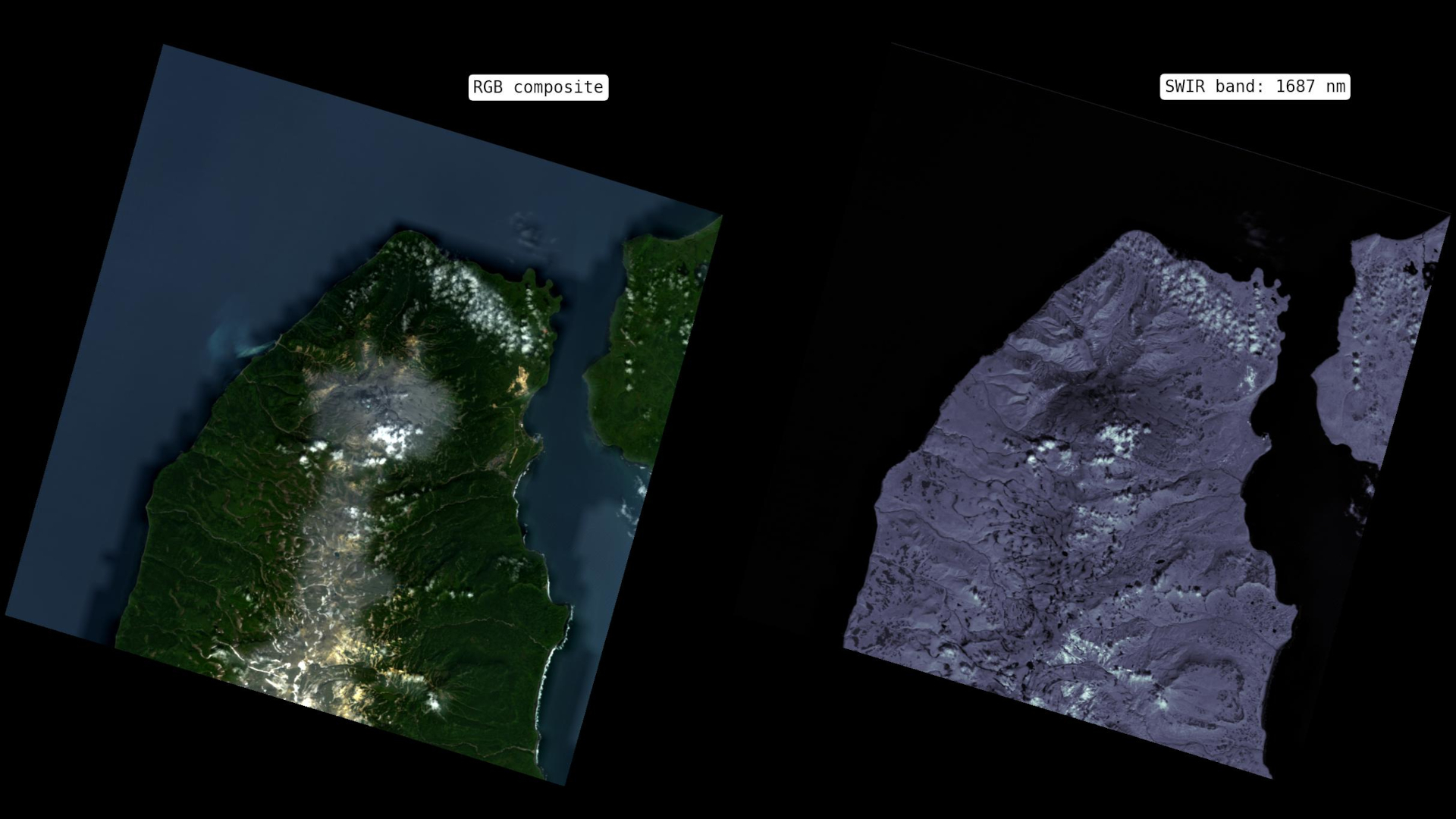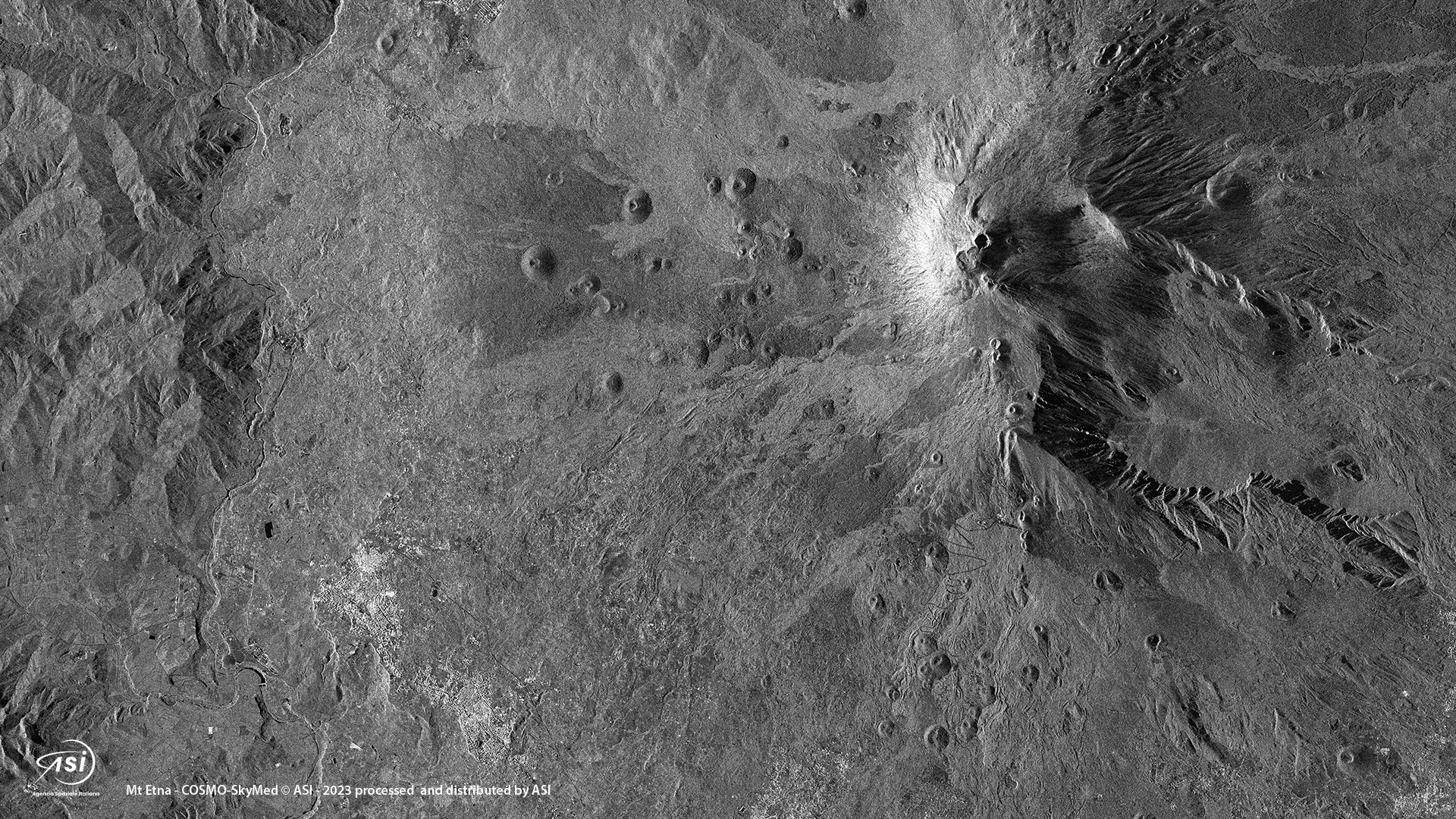Kīlauea Volcano, on the Island of Hawaiʻi, is one of the most active volcanoes in the world. After more than 35 years of near continuous activity, a huge eruption of lava occurred in 2018, destroying over 700 structures and causing collapse of the summit caldera. After September 2018, the volcano was largely quiet.
That interlude ended on the night of December 20, 2020, when the volcano came back to life with new lava flows erupting at the summit. The activity led to the formation of a lava lake as lava spilled from vents on the walls of the summit crater to fill the collapse pit that had formed in 2018. As of February 2021, the eruption is continuing, although at a lower rate than had been the case in late December 2020 and early January 2021.
COSMO-SkyMed data have been instrumental in tracking Kīlauea’s reawakening. The radar data are provided to the U.S. Geological Survey’s Hawaiian Volcano Observatory as part of the Hawaii Supersite—an international effort to encourage collaborative research into volcanic processes on the Island of Hawaiʻi and aid with the assessment and mitigation of volcanic
hazards to the local population by making satellite and ground-based monitoring data openly accessible to scientists. ASI, in coordination with the CEOS WG Disasters, has always continuously provided COSMO data to USGS. COSMO-SkyMed radar images were combined to form interferograms that showed ground deformation associated with the onset of the eruption. These interferograms indicate subsidence of the surface caused by depressurization of the volcano’s shallow magma chamber, which is feeding the 2020–2021 summit eruption.
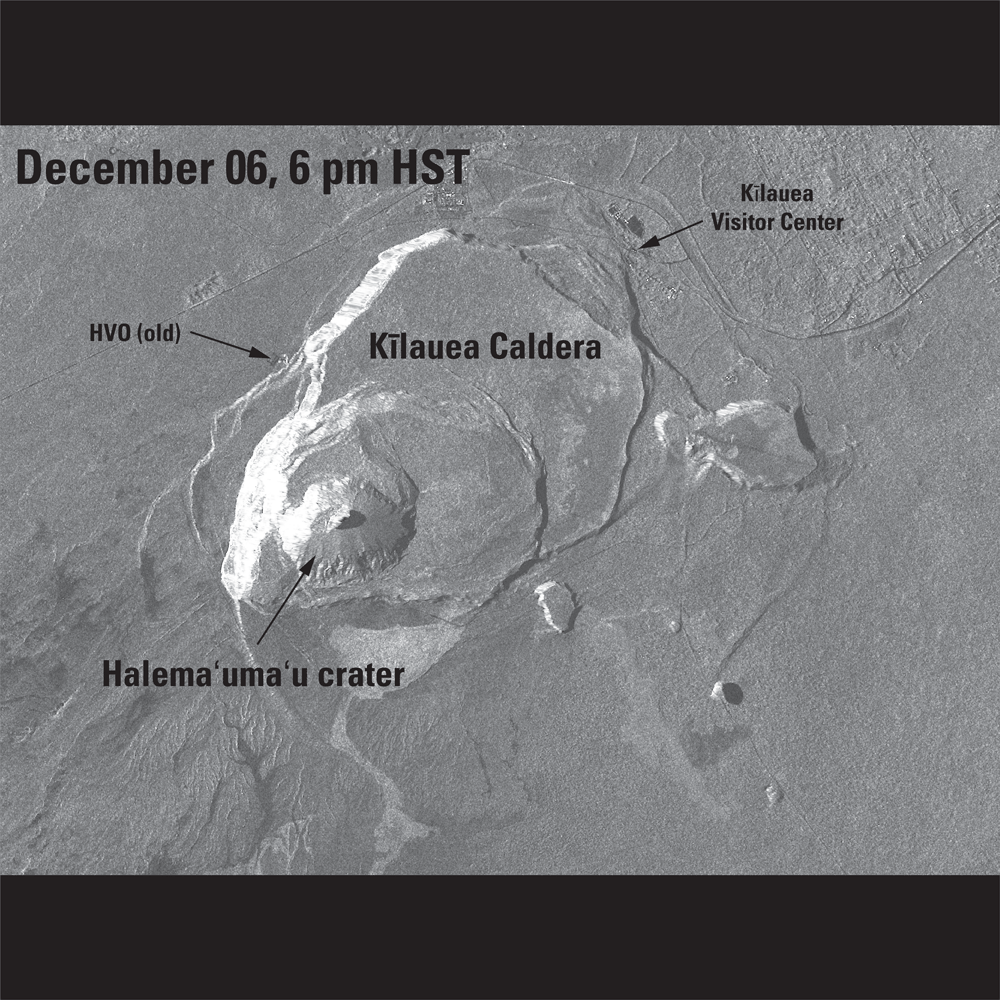
In addition, radar amplitude data from COSMO-SkyMed are helpful for tracking the growth of the lava lake at Kīlauea. This animated GIF shows Kīlauea caldera both before and after the onset of eruption, with the water lake that was located within the deep pit at the volcano’s summit replaced by a growing lava lake.
COSMO-SkyMed data have been used to monitor Kīlauea since 2010. Future data will be vital for continuing to track surface deformation and eruptive activity at this spectacular and hazardous volcano.
Credit: USGS
